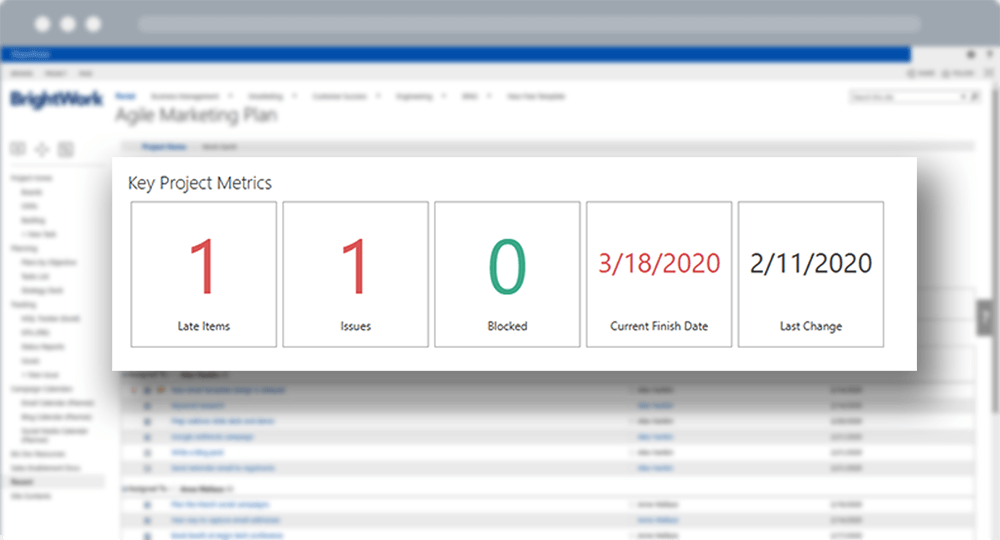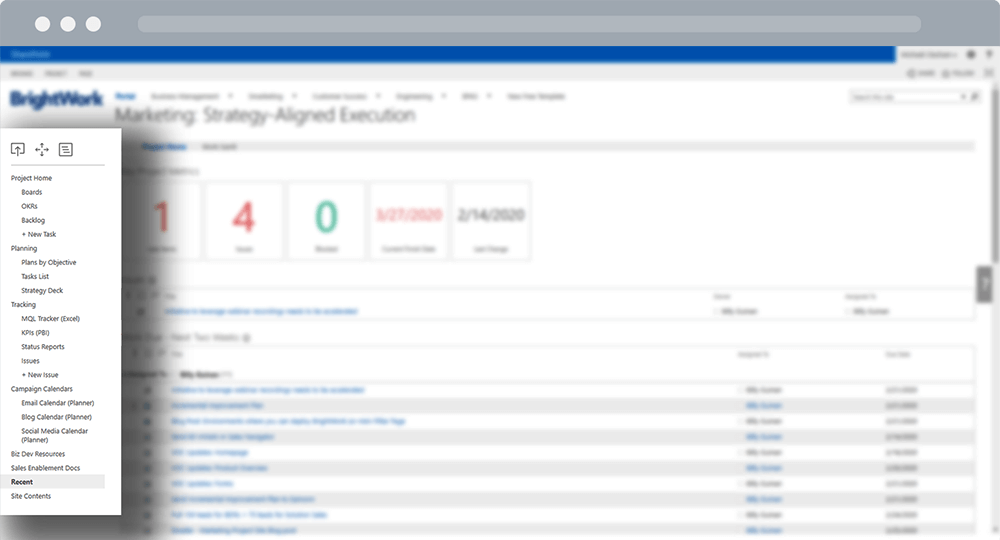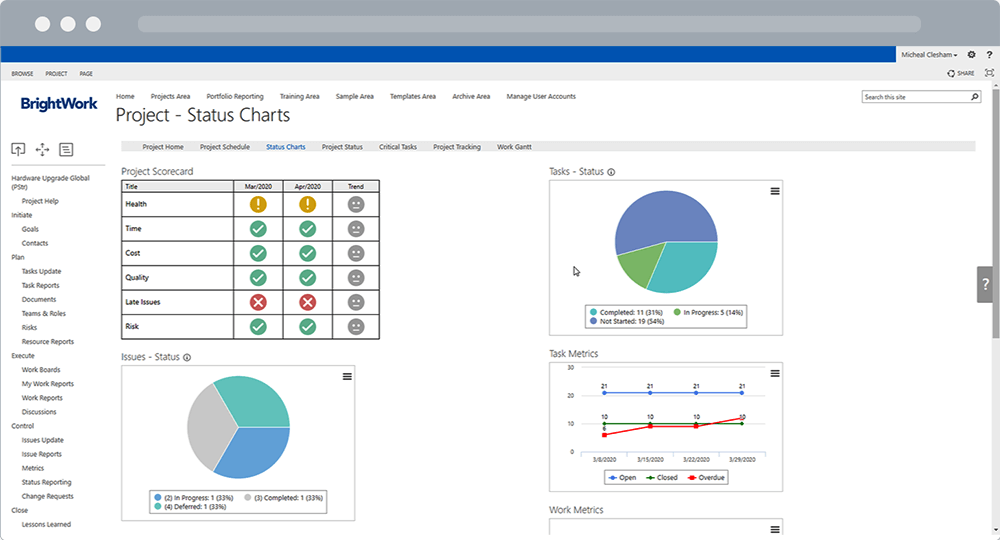Microsoft SharePoint can be configured to mimic project management processes and provide a complete collaborative workspace for project teams.
Try these tips with your free SharePoint project management template!
But many organizations simply don’t know where to start!
In this blog, I’ll run through our top 7 components that make up a great SharePoint Project Management site.
And if used effectively, they will make collaborative project management incredibly easy for your team.
So, what makes a great SharePoint project management site?
7 Components of an Effective SharePoint Project Management Site
1. Project Home Page
The project home page is the main dashboard of your SharePoint project site.
It should display key project information at a glance, and also offer navigation to other project management dashboards and reports.
It is here that the team and stakeholders will find the overall status of how the project is going.
The information displayed on the Project Homepage may vary from company to company, but typical information might include KPIs or traffic light reports, upcoming work or issues, a project Gantt.

2. Quick Launch
All SharePoint project sites have a Quick Launch menu.
The site Quick Launch exposes all of the links into the various lists and reports housed in the template and should be mapped to a project management process. Mapping the quick launch to a project management process ensures best practices baked right into the project site itself.
Below you see a Quick Launch from the project site used by the BrightWork Marketing Team.

3. Project Management Dashboards
The Project Home Page is perfect for a quick glance at the overall status of a project.
Sometimes, however, the Project Manager or stakeholders will require more detail on a specific task or issue or process, so it’s important to have project management dashboards that roll up information from across the project site.
One example is a Project Status Report, revealing more detail on KPIs and metrics, Open Work, project schedule, status comments, etc.
Other reports might drill into a specific report in more detail, like Open Issues or Overdue Work, for example.

4. Work Management Reports
Project team members won’t get any work done if they don’t know what work they’re supposed to be doing in the first place!
That is where Work Management reports come in very handy.
For team members, the “My Work” view will allow them to easily manage their tasks and responsibilities on the project.
For Project Managers, work reports track the overall project work and let them know how work is progressing and when tasks begin to slip.
5. Workflows
Your SharePoint site should also make use of workflows to automate some of your more routine project management processes.
SharePoint ships with five types of workflows, ready to use out-of-the-box.
- Approval, used for gathering approval on a document.
- Collect Feedback, used to collect feedback on a document.
- Collect Signatures, used with Word documents, Excel workbooks, and InfoPath forms.
- The Three-state Workflow tracks the status of a list item, like a task, through three states or phases.
- Approval, used when publishing new SharePoint sites.
More complex workflows can be created using SharePoint Designer or Nintex.
6. Project Management Guidance
Project management guidance can come in a number of different formats, but why not include some help in a Project Wiki in your project site?
Use the wiki to share information about your project management approach or how to use the project site.
This is very helpful for team members who are working on the project but may not have too much project management experience to draw on.
Using all of the above, your SharePoint project site can be set up to guide project managers and team members through the project management process.
7. Configurability
Out-of-the-box SharePoint is extremely configurable, so why am I listing this as an essential component of your project site?
Well, you absolutely want your project management site to match the way your organization manages projects.
With native SharePoint, you have the ability to create views, customize lists and alerts, sync with Microsoft Project, and much more.
So while you will have all of this capability by virtue of using SharePoint, it’s important to know what you can do right out of the box, so you’re managing projects the way you want to.
Editors note: This article was originally published in April 2013 and has been updated for freshness, accuracy, and comprehensiveness.

